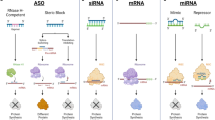Abstract
The importance of the thrombotic component of coronary heart disease is increasingly recognised, and in particular the role of the ccoagulation system in this process.
The Northwick Park Heart study was the first major prospective study to identify both fibrinogen and factor VII as risk factors, as powerful as total cholesterol in predicting ischaemic events.
Since then, a number of epidemiological studies have confirmed the importance of fibrinogen, not just in CHD but in stroke as well. A variety of environmental factors are known to influence levels of factor VII and fibrinogen and therefore support their role in the development of coronary thrombosis. Both are known to increase with age and body weight and are relatively elevated in diabetes.
Fibrinogen is strongly related to smoking habit and a substantial proportion of the IHD risk associated with smoking is mediated through this relationship. There is a dose response effect between number of cigarettes smoked and level of fibrinogen and an inverse relationship with time since cessation of the habit.
Factor VII is known to correlate with total cholesterol level, and there is a relationship between dietary variability of fat intake and factor VII, which is likely to play an important role in the risk of CHD.
The case for using either anticoagulation or anti platelet agents in secondary pevention of myocardial infarction is now clear, but there are still uncertainties in primary prevention which relate to the ideal dose intensity of either aspirin or anti-coagulation and the type of patient most likely to benefit.
The ongoing Thrombosis Prevention Trial identifies middle-aged males at high risk of a myocardial infarction. These are then randomised in a double blind placebo controlled factorial design to receive one of four treatments: 75 mg of aspirin and warfarin at a low intensity level of anticoagulation titrated to achieve an international normalised ratio of 1.5, either agent singly, or two types of placebo. The progress of this trial is discussed.
Similar content being viewed by others
References
BroadhurstP.,KelleherC.,HughesL.,ImersonJ.D. andRafteryE.B. (1990): Fibrinogen, Factor VII clotting activity and coronary artery disease severity- Atherosclerosis85: 169–173.
FullerJ.H.,KeenH.,JarrettR.J.,OmerT.,MeadeT.W.,ChakrabartiR.,NorthW.R.S. andStirlingY. (1979): Haemostatic variables associated with Diabetes and its complications - British Medical Journal2: 964–966.
GreenK.G.,HeadyA. andOliverM.E. (1989): Blood pressure, cigarette smoking and heart attack in the WHO co-operative trial of clofibrate -International Journal of Epidemiology18: 355–360.
International Anticoagulant Review Group (1970): Collaborative analysis of long-term anticoagulant administration after acute myocardial infarction -Lancet.1: 203–209.
KannelW.B.,D'AgostinoR.B. andBelangerA.J. (1987): Fibrinogen, cigarette smoking and risk of cardiovascular disease. Insights from the Framingham Study - Am. Heart.J: 1006–1010.
KelleherC.C.,MitropoulosK.A.,MartinJ.C.,ImesonJ.,HughesL.O. andMeadeT.W. (1990): Hageman factor in middle aged men: Its relevance to risk of coronary thrombosis - British Journal of Haematology76 (suppl1): 19 (Abstract)
MeadeT.W.,BrozovicM.,ChakrabartiR.R.,HainesA.P.,ImesonJ.D.,MellowsS.,MillerG.J.,NorthW.R.S.,StirlingY. andThompsonS.G. (1986): Haemostatic function and ischaemic Heart disease: Principal results of the Nortwick Park Heart Study -Lancet.2: 533–537.
MeadeT.W. (1987): Epidemiology of Atheroma, thrombosis and ischaemic heart disease. Haemostasis and Thrombosis. Churcill Livingstone -New York and London Chap.40: 697–721.
MeadeT.W.,ImesonJ. andStirlingY. (1987): Effects of changes in smoking and other characteristics on clotting factors and the risk of ischaemic heart disease - The Lancet.2: 986–988.
MeadeT.W. (1988): Risks and mechanisms of cardiovascular events in users of oral contraceptives -American Journal of Obstetrics and Gynaecology158: 1646–1652.
MeadeT.W.,WilkesH.C.,StirlingY.,BrennanP.J.,KelleherC. andBrowneW. (1988): Randomised controlled trial of low dose warfarin in the primary prevention of ischaemic heart disease in men at high risk: design and pilot study - European Heart Journal9: 836–843.
MeadeT.W.,DyerS.,HowarthD.J.,ImersonJ.D. andStirlingY. (1990): Antithrombin III and procoagulant activity: Sex differences and effects of the menopause - British Journal of Haematology74: 77–81.
MillerG.J.,CruickshankJ.K.,EllisL.J.,ThompsonR.L.,WilkesH.C.,StirlingY.,MitropoulosK.A.,AllisonJ.Y.,FoxT.E. andWalkerA.0. (1989): Fat Consumption and factor VII coagulant activity in middle aged men - Atherosclerosis78: 19–24.
MillerG.J.,SeghatcianM.J.,WalterS.J.,HowarthD.J.,ThompsonS.G.,EsnoufM.P. andMeadeT.W. (1986): An association between the factor VII coagulant activity and thrombin activity induced by surface / cold exposure of normal human plasma - British Journal of Haematology62: 379–384.
MitchellJ.R.A. (1984): Anticoagulants in myocardial infarction: an appraisal of randomised clinical trials. In: Anticoagulants and myocardial infarction: A reappraisal (Meade T.W., ed) - New York: Wiley: Chap 5: 113–134.
MitropouosK.A.,EsnoufM.P. andMeadeT.W. (1987): Increased Factor VII coagulant activity in the rabbit following diet induced hypercholesterolaemia -Atherosclerosis63: 43–52.
MitropoulosK.A.,MartinJ.C.,ReevesB.E.A. andEsnoufM.P. (1989): The activation of the contact phase of coagulation by physiologic surfaces in plasma: The effect of large negatively charged liposomal vesicles - Blood.73: 1525–1533.
Sixty-Plus Reinfarction Study Research group. (1980): A double-blind trial to assess long-term oral anticoagulant therapy in elderly patients after myocardial infarction - The Lancet.2: 989–994.
Stanwell-SmithR. andMeadeT.W. (1984): Hormone replacement therapy for menopausal women: a review of its effect on haemostatic function, lipids and blood pressure - Adv. Drug. React. AC. Pois. Rev.4: 187–210.
StoneM.C. andThorpJ.M. (1985): Plasma Fibrinogen- a major coronary risk factor - J.R. Coll. Gen. Pract.35: 565–569.
WilhelmsenL.,SvardsuddK.,Korsan-BengtsenK.,LarssonB.,WelinL. andTibblinG. (1984): Fibrinogen as a risk factor for stroke and myocardial infarction - New England Journal of Medicine331: 501–505.
WilkesH.C.,KelleherC. andMeadeT.W. (1988): Smoking and Plasma Fibrinogen - The Lancet.2: 307–308.
Author information
Authors and Affiliations
Rights and permissions
About this article
Cite this article
Kelleher, C.C. Plasma fibrinogen and factor VII as risk factors for cardiovascular disease. Eur J Epidemiol 8 (Suppl 1), 79–82 (1992). https://doi.org/10.1007/BF00145355
Issue Date:
DOI: https://doi.org/10.1007/BF00145355




